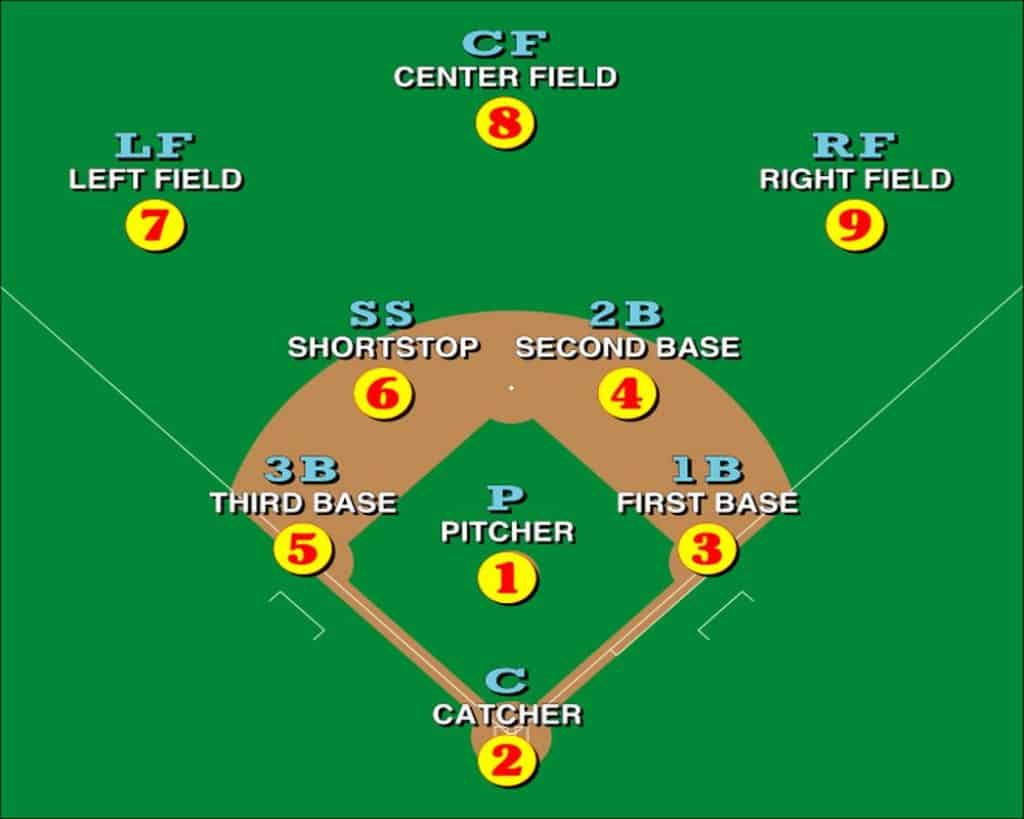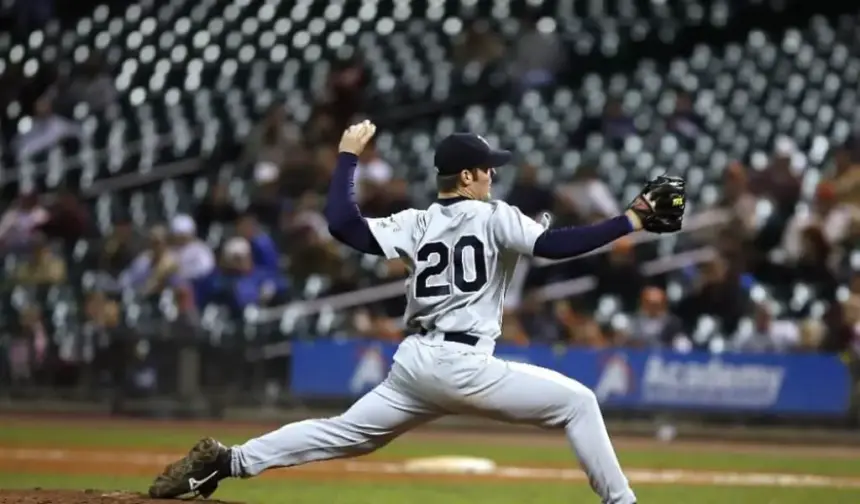Baseball Positions In Order Of Importance (Ranking + Reasons)
If you’re new to baseball, understanding all positions on the field and their roles can be a bit overwhelming.
Even the more experienced baseball fans, and experts as well, often struggle to decide which position is the most important.
The question of which player contributes the most to winning ball games has been the subject of heated debates probably ever since the game was invented.
To make things clearer, I’ll list baseball positions in order of importance and explain why each one of them is placed where it is.
Like all lists, this one is subjective, but it still doesn’t change the fact that some positions in baseball are more important than others.
Table of Contents
Baseball Positions In Order Of Importance

There’s no doubt that every position in baseball carries a lot of responsibility and that every player has a role in winning a game.
Still, some contribute a bit more than others.
Below, is the list of baseball positions ranked on how important they are to the team as a whole.
1. Pitcher
Most experts and fans will agree that the pitcher plays a crucial role on the baseball field.
More than any other position, the pitcher controls the game and their play is the most influential to the final outcome.
Plus, they take part in every play while on the field.
While you may get by with an inferior player in some other position, having a poor pitcher will most likely result in a loss.
2. Catcher
While pitchers play the most important position in baseball, their performance in many ways depends on the catcher.
Catchers often act as managers on the field as they commonly call every pitch.
They see the whole field and know how every opposing hitter operates and what are their strengths and weaknesses.
In addition, catchers have a deep understanding of their own pitchers, which is important as they are always there while starting pitchers change.
3. Shortstop
Of all the players in the infield and outfield, the shortstop probably sees the most action.
They’re responsible for covering large areas of the field which is why players at this position are always athletic and fast.
Shortstops cover the second base on any play to the right of the field, cut off any balls to the deep center or left field, and also cover the second base on steal attempts.
Plus, they must have an excellent arm as they are often in a position to make long throws across the infield.
4. Centerfield
Centerfielder plays in the middle field position, but, similar to shortstop, his duty includes covering the large areas on either side of the normal position.
They work as a backup for the first or third baseman and allow corner outfielders to play deeper by covering the area behind third/first for popups.
In addition, they’re the ones to make the call on who takes a shot when the ball is flying between the outfielders.
A good centerfielder, with speed and a solid throwing arm, can make up for the weaker players in the left and right outfield.
5. 2nd Base
Despite their name, the second basemen usually lurk in the area between the first and second bases, close to shortstops.
They cover the base on any player that is made to the left side of the field. If the play is to the right, they act as a cutoff man on the throwback to the infield.
Their main responsibility, besides covering the base, is to field balls and burn runners trying to get to the second.
To play the 2nd baseman, a player has to be quick, agile, and have a great understanding of the game.
6. 3rd Base
The 3rd baseman is positioned on the left side of the infield, above or near the third base. Commonly, he’s told to take everything going to his left and throw it back to 1st or 2nd base.
So, the accuracy and the power of the 3rd baseman’s throws are often the keys to preventing runners from scoring.
As most of the hitters in the MLB are right-handed and pull the ball, the 3rd baseman is more of a reaction position than most.
7. 1st Base
Playing on or near the first base, the first baseman tries to catch all the throws coming from his fellow infielders after the ball has been hit by a batter.
These throws come from all angles and at all heights, so this is a rather physically demanding position.
A good 1st baseman, who can scoop the ball from the dirt and catch difficult throws, is extremely important.
He can take a lot of pressure off of his teammates as they’ll know they don’t have to make a perfect throw.
8. Left Field
The job of a left fielder is to handle any balls that go beyond the infield into the left field and throw them back to the best possible target.
Commonly, this will be either shortstop or a third baseman.
The position can be rather challenging as three out of four balls usually fly to the center of left field.
However, due to the support by the shortstop and the third baseman, it’s still considered one of the easiest to play.
9. Right Field
The main responsibility of the right fielder is catching the balls flying to the right field and fielding to the nearby area.
They back up the first baseman in case the errant throw gets by the first base position.
Even though this is where most managers put players who are good hitters but poor fielders, the right fielder still needs a strong arm to throw to cutoff man and prevent runners from scoring.
This is often considered to be, alongside the left field, the least important position in baseball.
Why is the Pitcher The Most Important Position?

No position impacts the game more than the pitcher. They’re involved in every play and they set the tone for how a particular play will pan out.
Every defensive play starts with the pitcher and they’re also the defensive first line after the hit.
Although their responsibilities don’t involve much fielding, they’re the starting point to minimizing the offensive success of the opposing team.
When the pitching is bad, there’s not much the defenders can do to prevent home runs. On the other hand, good pitching makes life easier for all other defensive players.
Furthermore, this is the most demanding and challenging position, so starting pitchers only throw once every five days.
Conclusion
On the baseball field, every play counts and every position can get their big moment in a huge game.
That’s why listing them in the order of importance is no easy task.
Every baseball fan may have a different opinion on which position matters the most. Especially if they played baseball before.
Most likely, every player will tell you that their position is the one that is crucial.
While I feel that this list is fairly accurate, other people may have different views on the importance of certain positions in baseball.
Just as any other list, if nothing else, it can serve as a basis for discussion.




